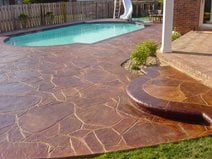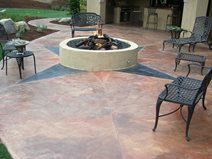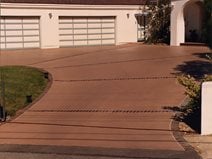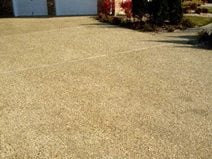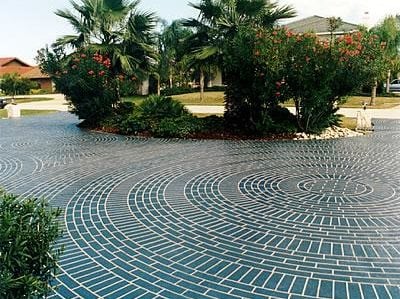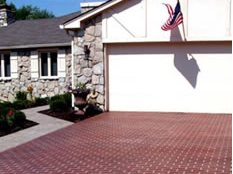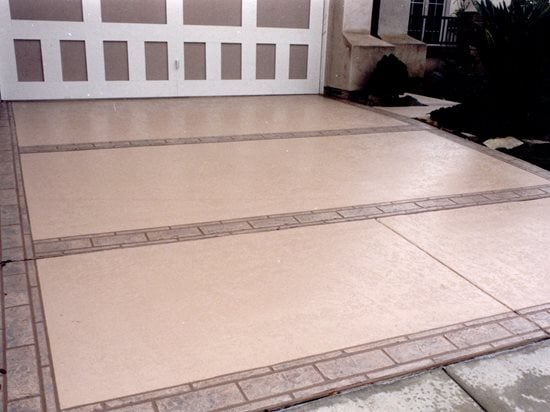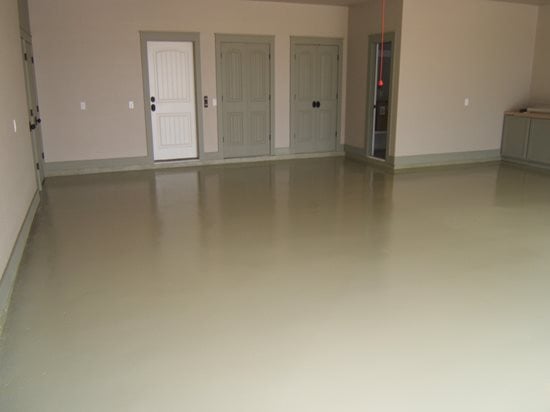- Concrete Maitenance Home
- Cleaning and Sealing Exterior Concrete: A Guide to Maintaining and Caring for Exterior Decorative Concrete of All Types
- Sealing Plain Concrete
- Sealing Colored Concrete
- Sealing Exposed Aggregate Concrete
- Sealing Joints
- Tips for Cleaning Exterior Concrete
- How to Maintain Concrete Floors
- Six Common Questions about Concrete Floor Sealers
- Protecting Acid-Stained Floors
- Watch Videos on Maintaining and Sealing Concrete Floors, with Bob Harris
- How to Maintain Concrete Countertops
- Countertop Sealer Overview: Which Sealer is Best For Your Countertop?
- Related Information:
- Concrete Sealer Information
- Comparison Chart of Concrete Sealers
- Advice on Choosing and Applying Concrete Sealers, from Technical Expert Chris Sullivan
How to Clean and Seal Concrete
Cleaning your concrete periodically and keeping it sealed with the right concrete sealers are the key components of any good maintenance program. How often you clean and reseal will largely depend on the conditions the concrete is exposed to, especially weather extremes, sunlight intensity and the amount of foot or vehicle traffic. Be sure to ask your concrete contractor to recommend cleaning and maintenance products appropriate for your pavement type and exposure conditions.
If you have a big area to maintain or simply don't want to tackle the work yourself, The Concrete Network can help you Find a Concrete Cleaning professional in your area.
HOW TO CLEAN DECORATIVE CONCRETE PATIOS & MORE
The following four finishes are popular choices for patios, driveways, pool decks and other outdoor surfaces. Click through to learn how to clean and seal each option.
Find products: Concrete Cleaners | Concrete Sealers
PLAIN CONCRETE MAINTENANCE (WITH BROOMED OR TEXTURED FINISH)
Routine Maintenance
Keep the surface free of debris by sweeping it with a broom or leaf blower or rinsing with a garden hose. To remove stubborn dirt, such as tire marks, leaf stains and grease spots, follow these general cleaning recommendations.
Although water alone can remove dirt from concrete, cleaning chemicals followed by power washing and scrubbing may be needed to remove tough stains. Here are tips for:
Special Care Requirements
Concrete pavements exposed to heavy vehicle traffic and weather extremes are particularly vulnerable to premature wear and deterioration. Periodic sealing is the best way to protect your concrete from moisture penetration, freeze-thaw conditions, deicing chemicals and abrasion (see An Introduction to Sealers).
Also follow this advice for:
ENGRAVED CONCRETE MAINTENANCE
Any brick, tile or cobblestones patterns you have engraved in your concrete will stay for the life of the concrete surface. It is not like an actual brick that may break. It has been engraved into the concrete, it is part of the concrete itself.
Routine Maintenance
Concrete engraving uses special tools and equipment to cut brick, tile or cobblestone patterns into hardened concrete. Unlike toppings or overlays, engraving is permanent and won't wear away or lose bond. The cut patterns will remain for the life of the surface. Little routine maintenance is required, other than occasional cleaning (see procedures for plain concrete).
Special Care Requirements
Often engraved surfaces are stained to add color. Follow the same periodic sealing recommendations given for stained concrete to enhance the color and protect the surface from deicing chemicals and oil and grease stains.
The color change over time with concrete stains is hard to predict and it is not a perfect science (many times a color actually becomes darker). This is not meant to be a negative, instead it is much like worn brick or other paving materials, they age. Often this creates an even more appreciated look.
Learn more about this pavement type: Engraving Systems Transform Existing Concrete
STENCILED CONCRETE MAINTENANCE
Routine Maintenance
The stenciling process for exterior concrete is very similar to that for stamped concrete, but instead of rubber stamps, stenciling uses disposable paper stencils to impart the pattern in the concrete. For general cleaning, use low-pressure water or scrub the surface with a mild detergent.
Special Care Requirements
Like stamped concrete, stenciled concrete is colored with a dry-shake hardener and protected by several coats of sealer. Periodic resealing, as needed, will keep the surface looking its best. (Follow the same recommendations given for stamped concrete.)
Learn more about this pavement type: Stenciled Concrete
CONCRETE OVERLAY MAINTENANCE
A high-quality overlay installed by an experienced applicator can provide a new surface that will last for decades, especially when protected by a good-quality sealer. A sealer not only makes the surface easier to clean, it offers other benefits as well, such as enriching the color intensity of the overlay, blocking the penetration of stains, and improving water repellency and abrasion resistance. Some sealers will also give the surface a sheen, ranging from satin to high gloss depending on the product used.
Routine Maintenance
However, even sealed overlays will require some routine maintenance, depending on exposure conditions and the type and amount of traffic they receive. For interior floors, wet mopping or dry dust mopping is typically the only upkeep needed to avoid the buildup of abrasive dirt particles. Exterior flatwork may require occasional pressure washing or scrubbing with a mild detergent.
Special Care Requirements
Some overlay manufacturers recommend resealing outdoor surfaces annually, depending on the amount of traffic they receive and whether they are exposed to freeze-thaw conditions. Be sure to check with the overlay installer or manufacturer for recommendations as to the appropriate sealer to use for a particular application and to verify compatibility with the overlay. Not all sealers are suitable for exterior use.
Learn more about this pavement type: Concrete Overlays
Sealer and Maintenance Trends in Decorative Overlays
